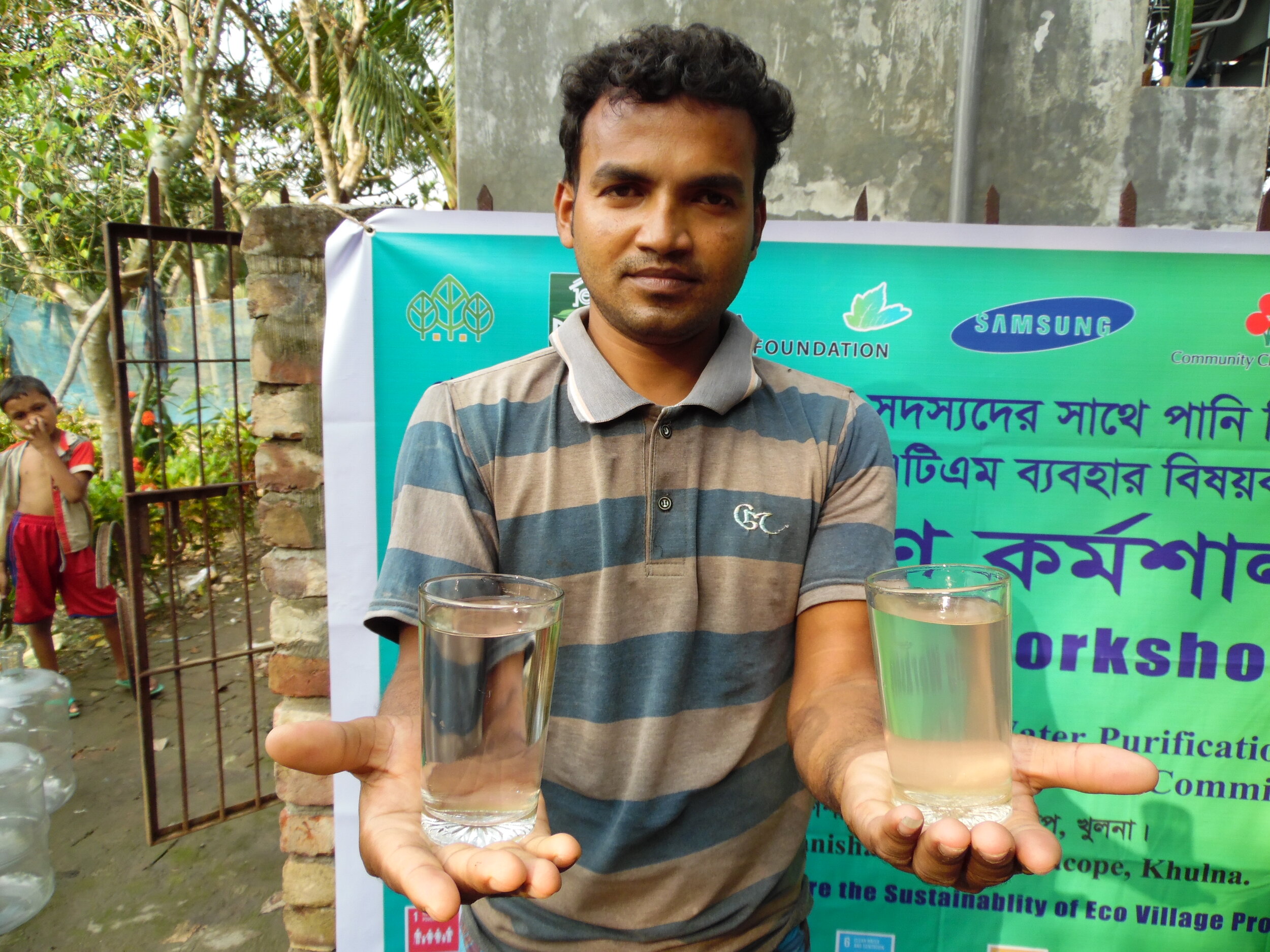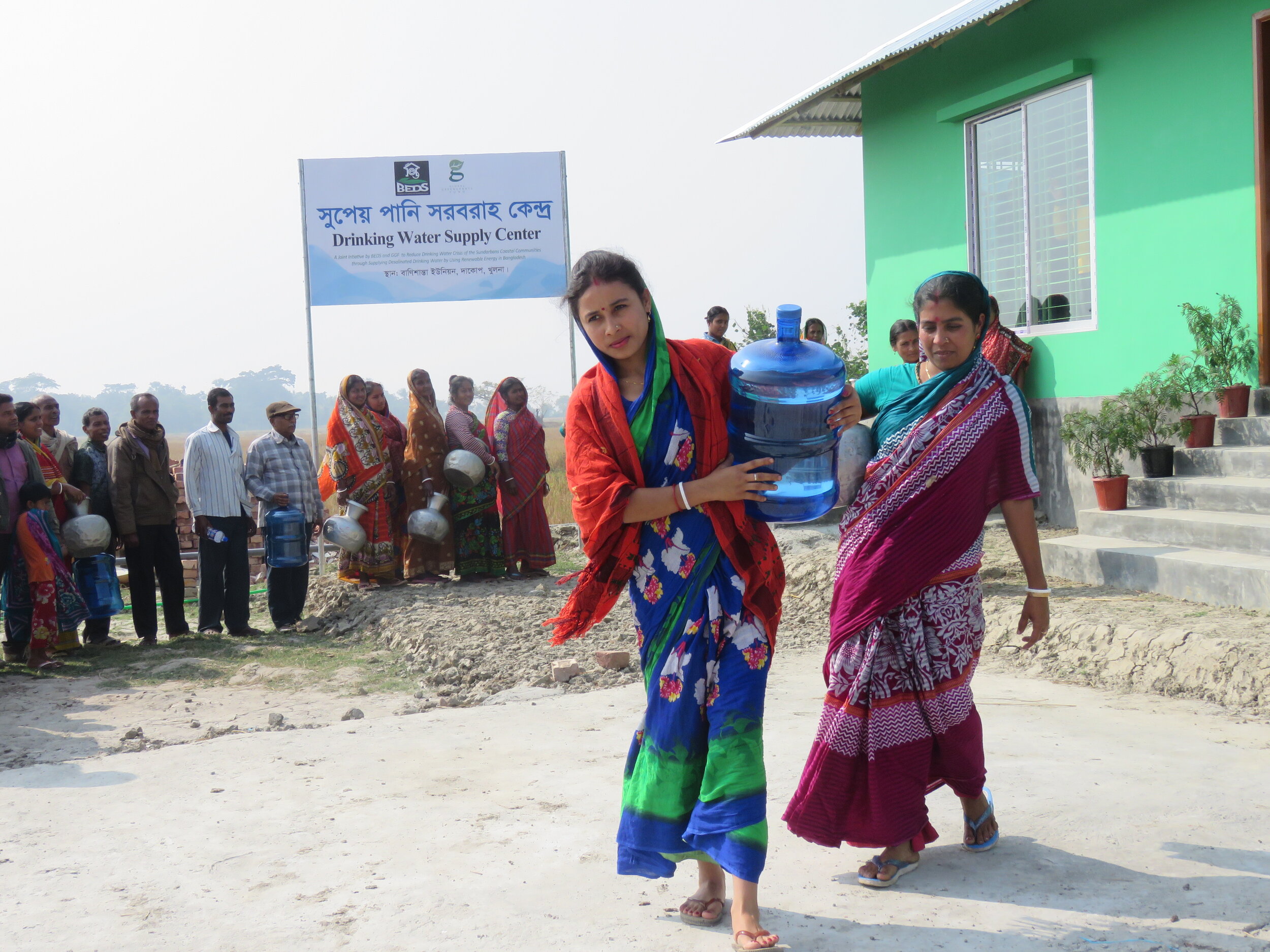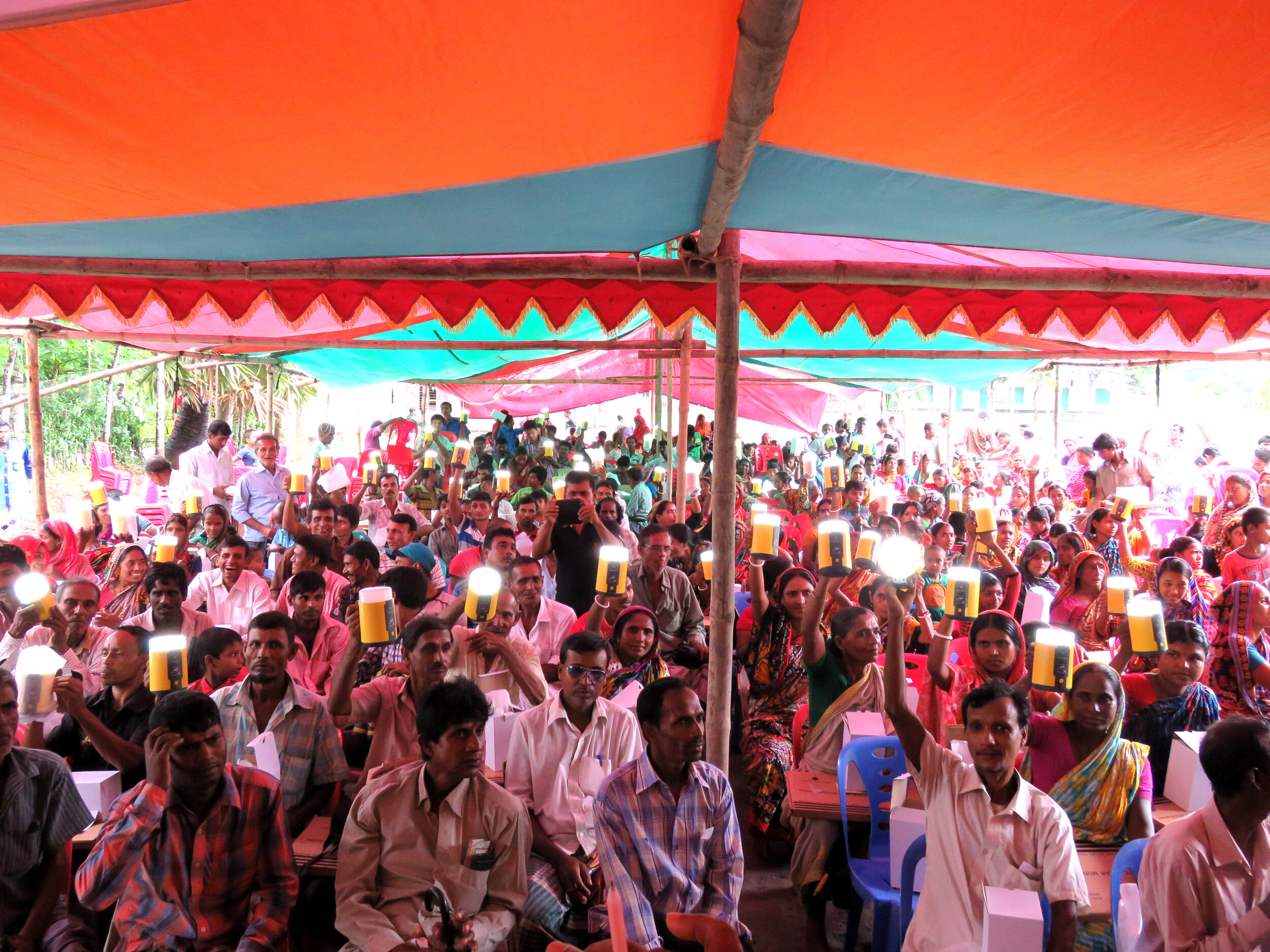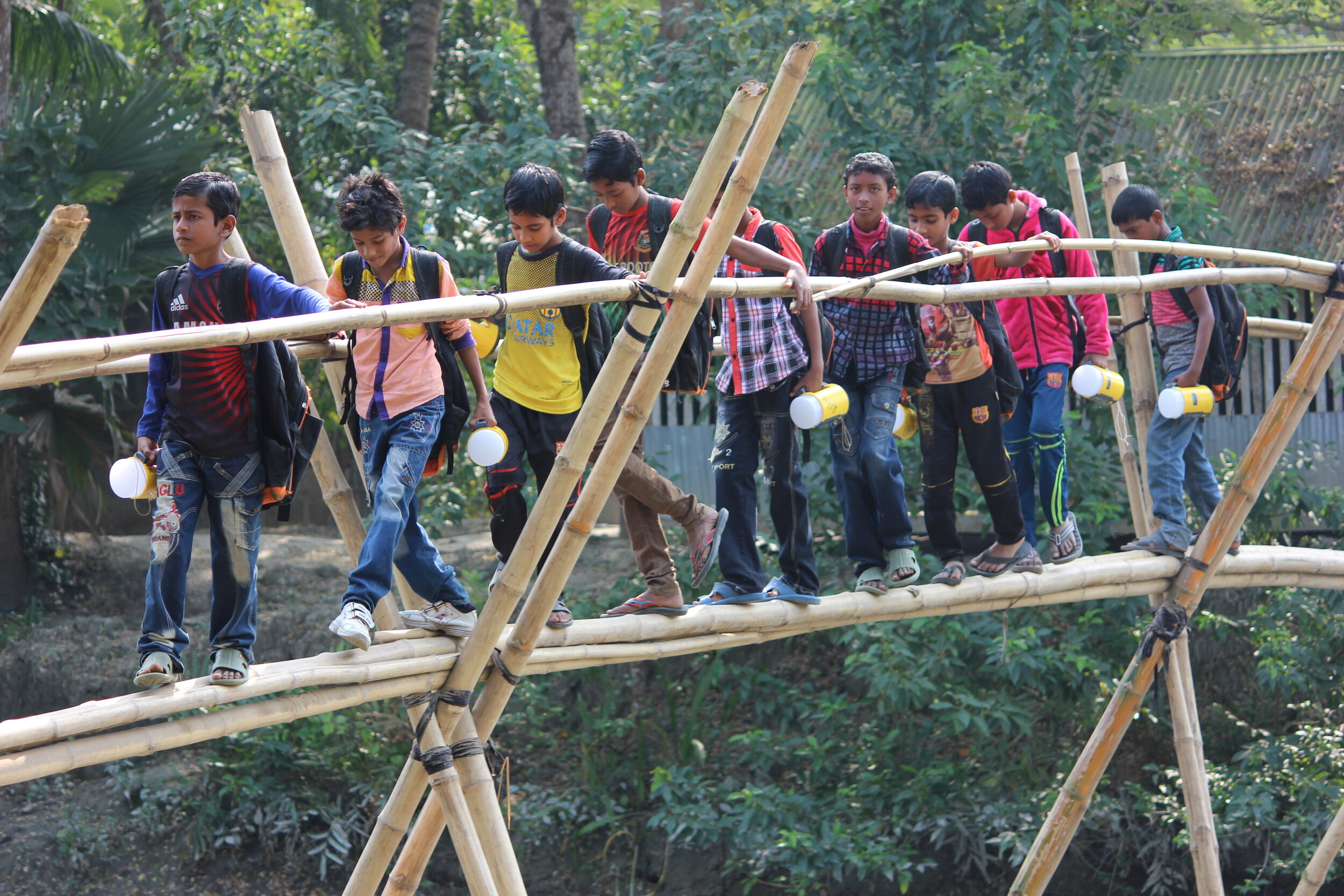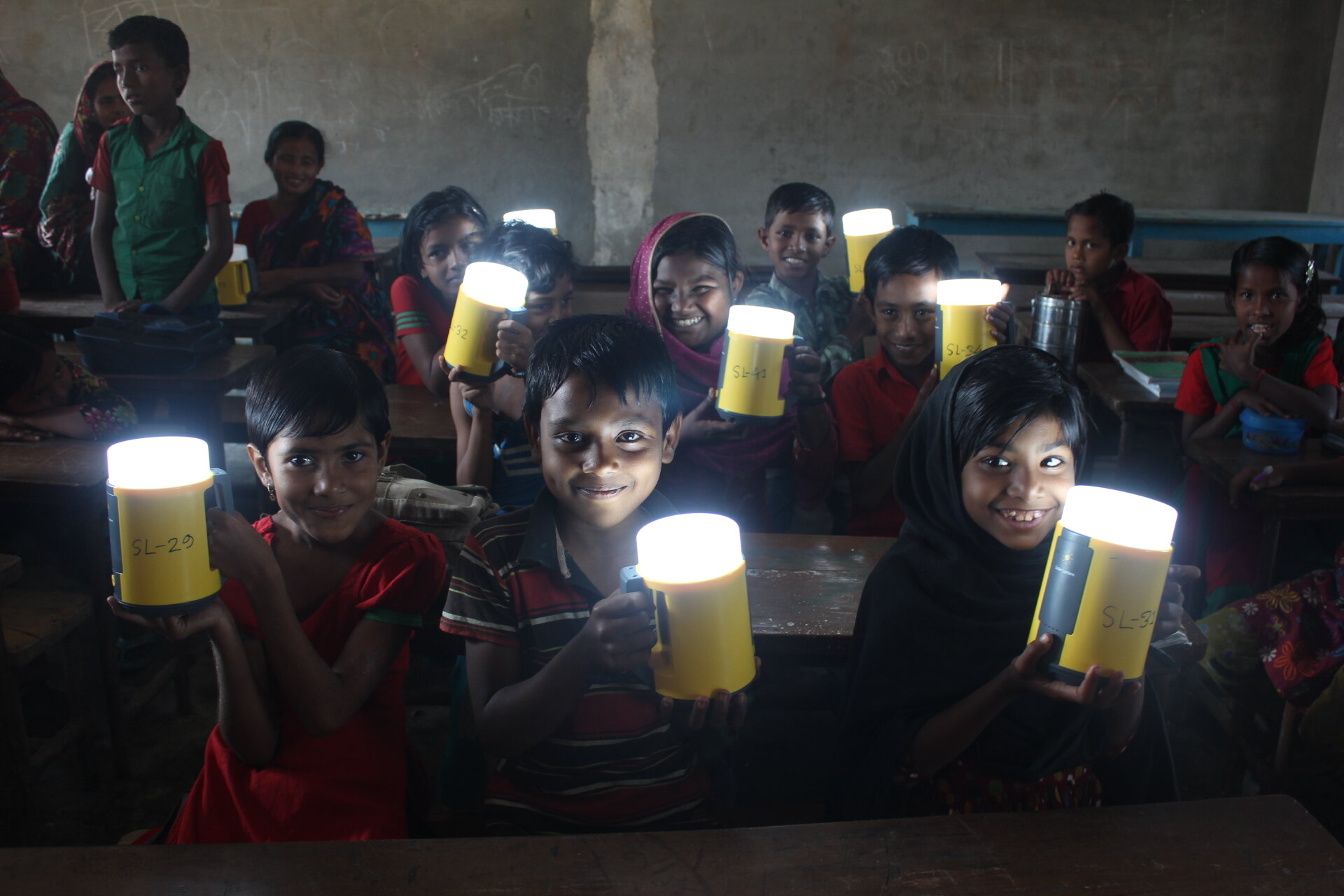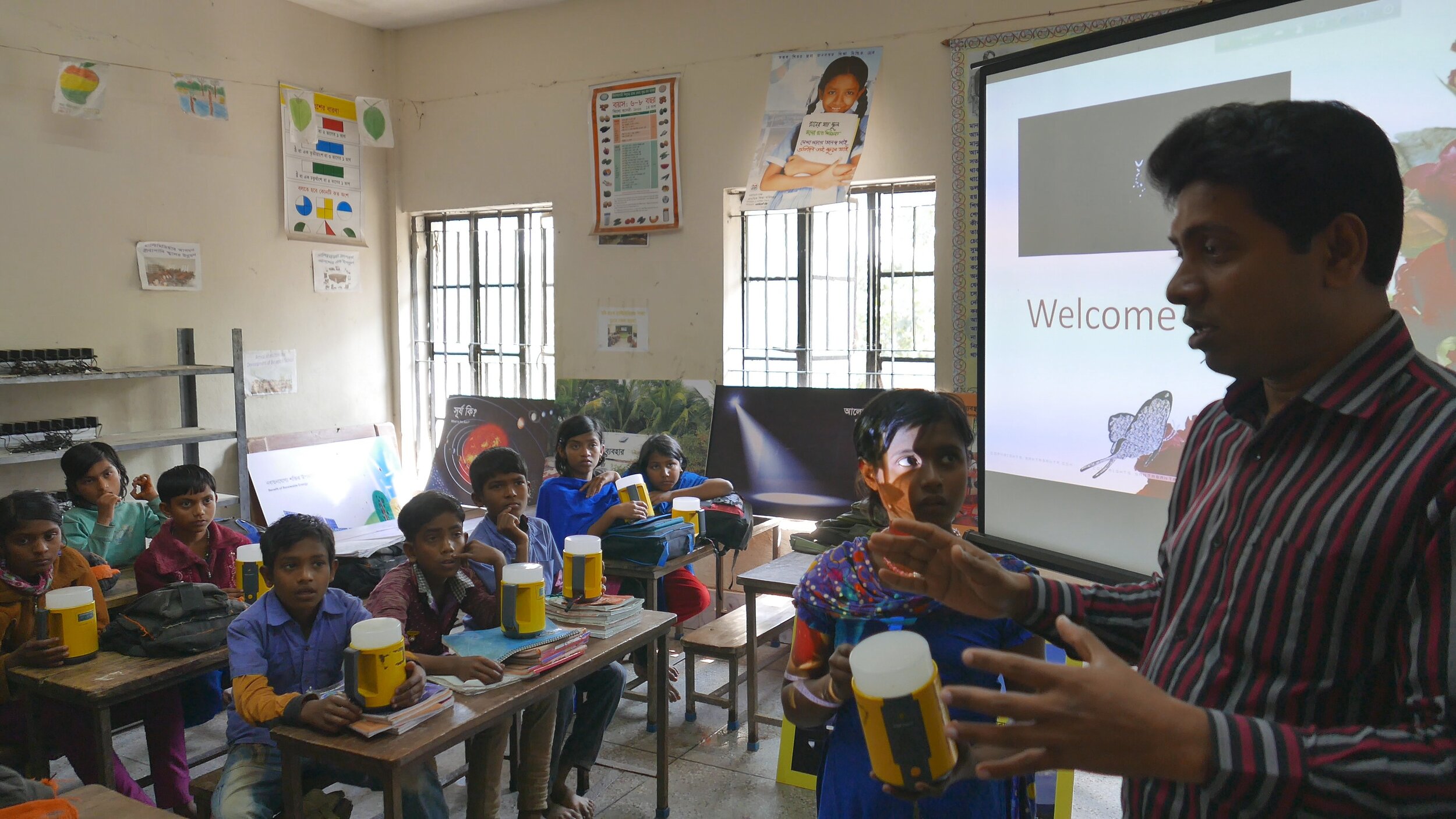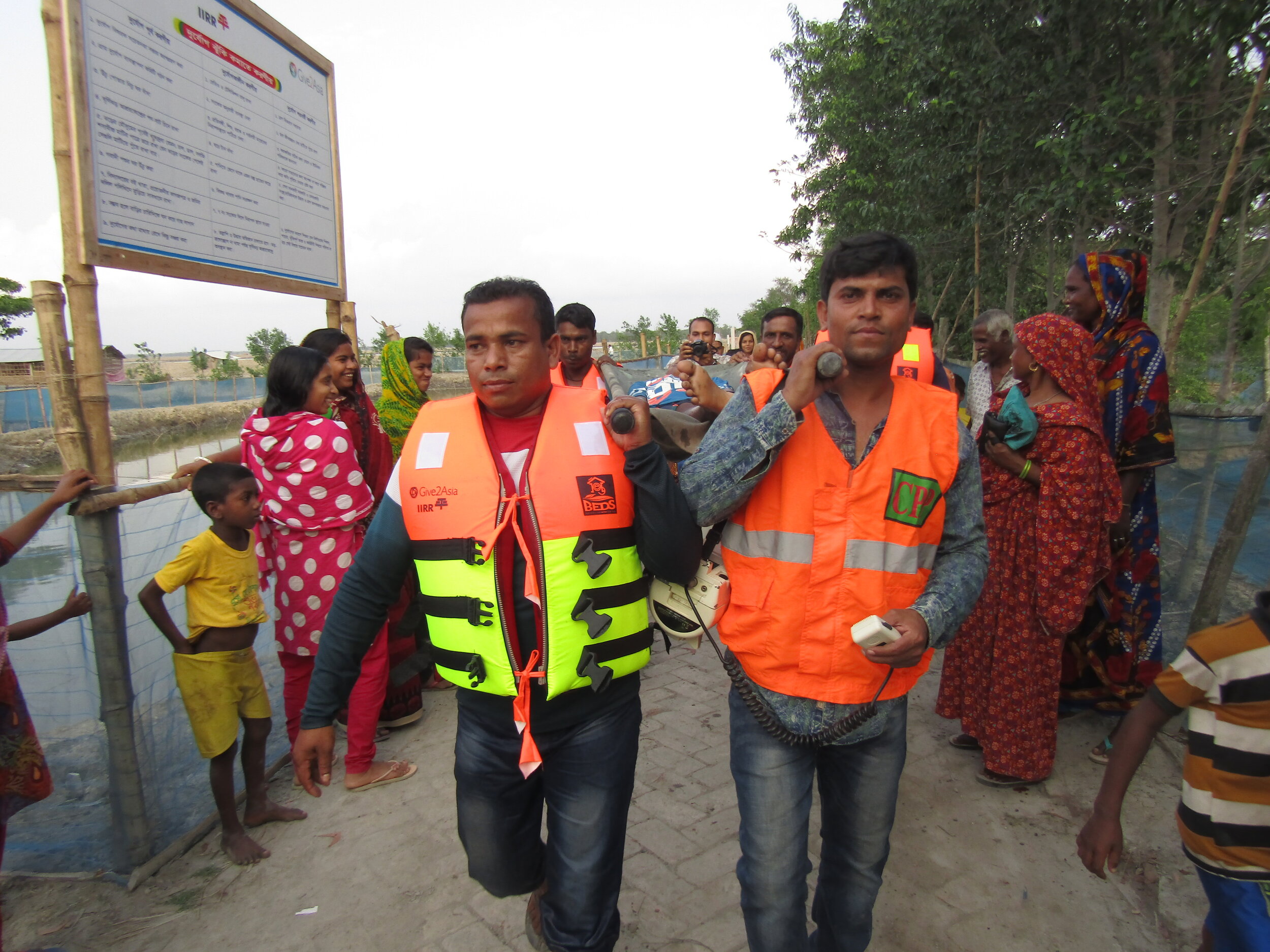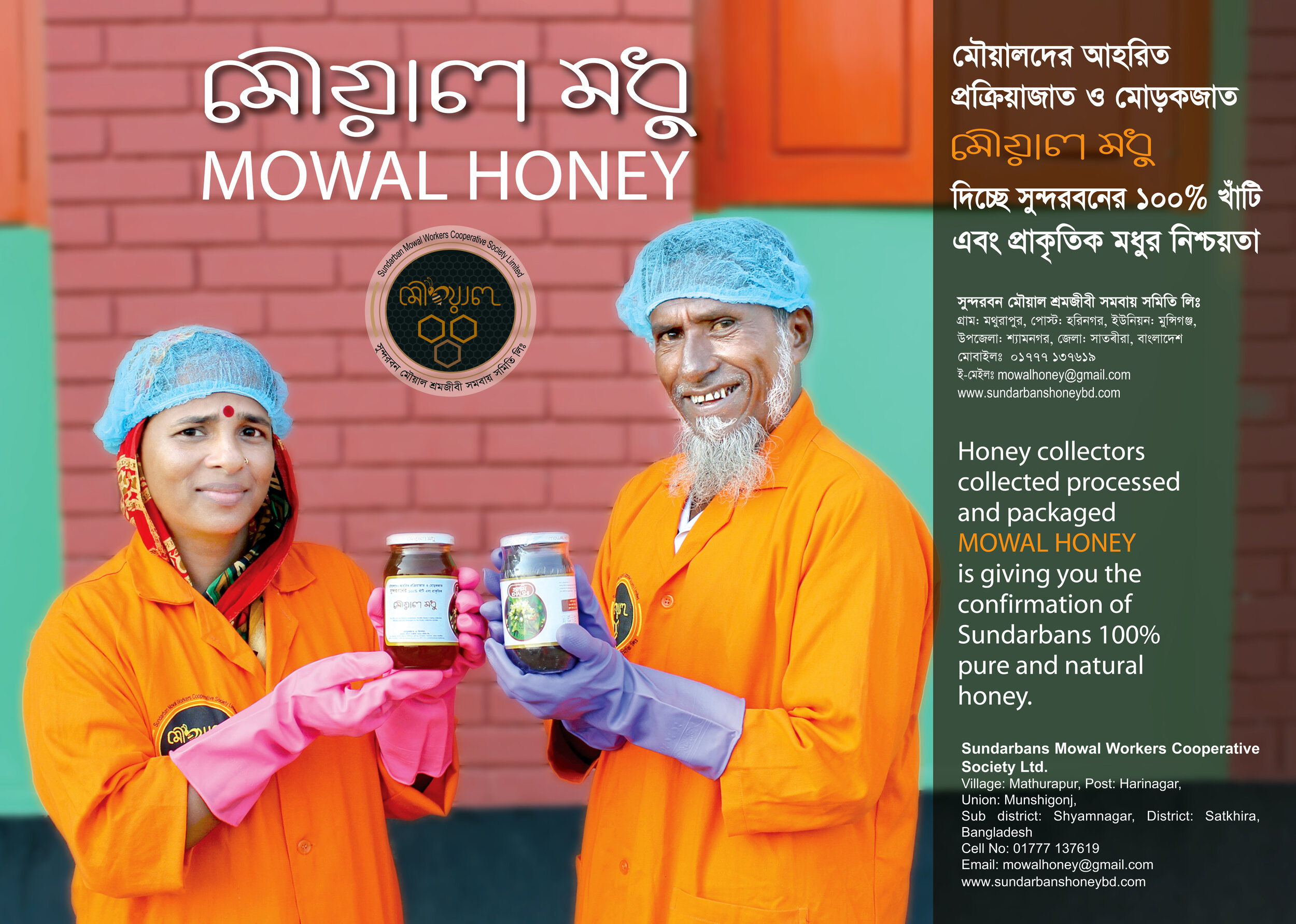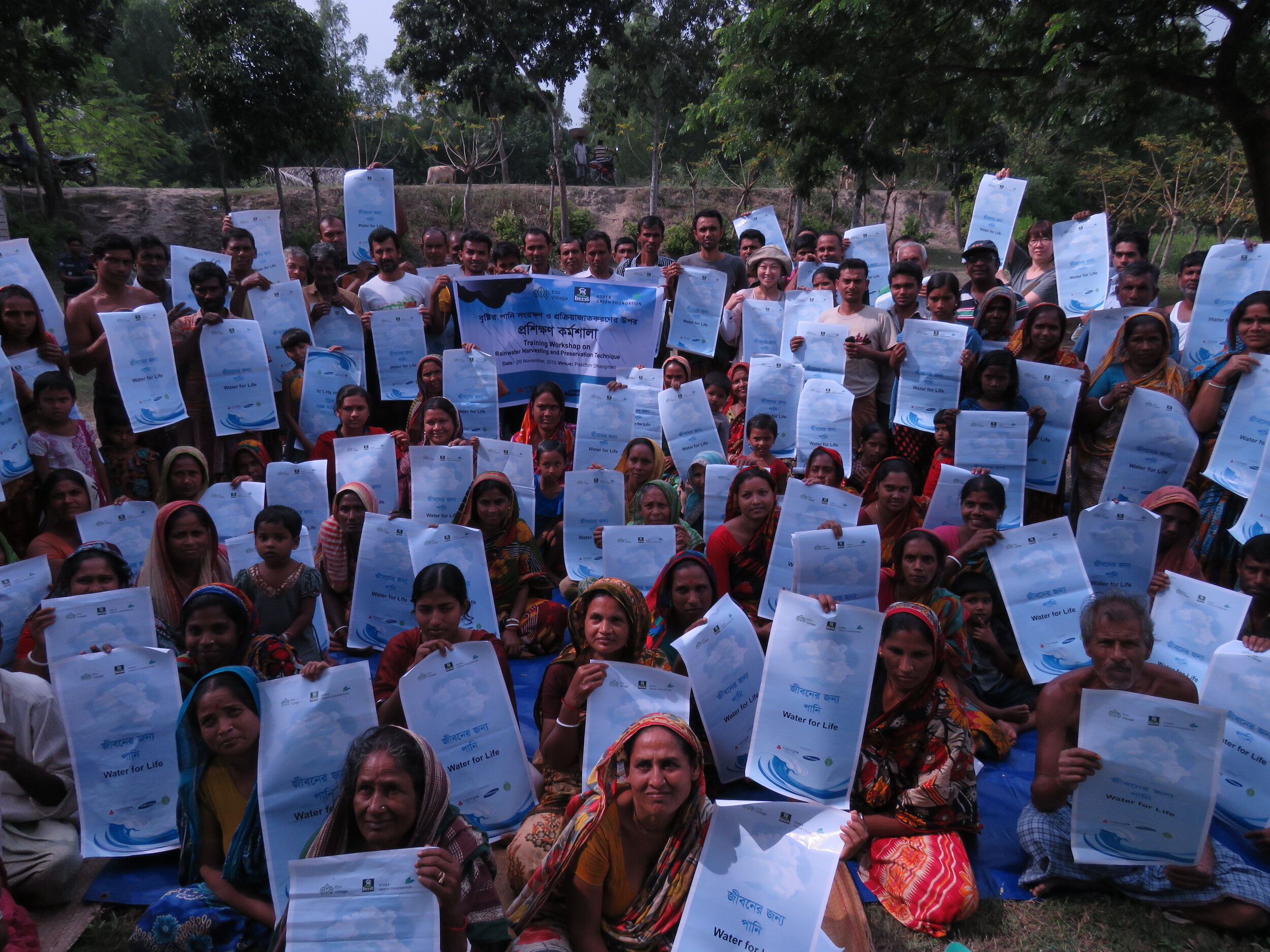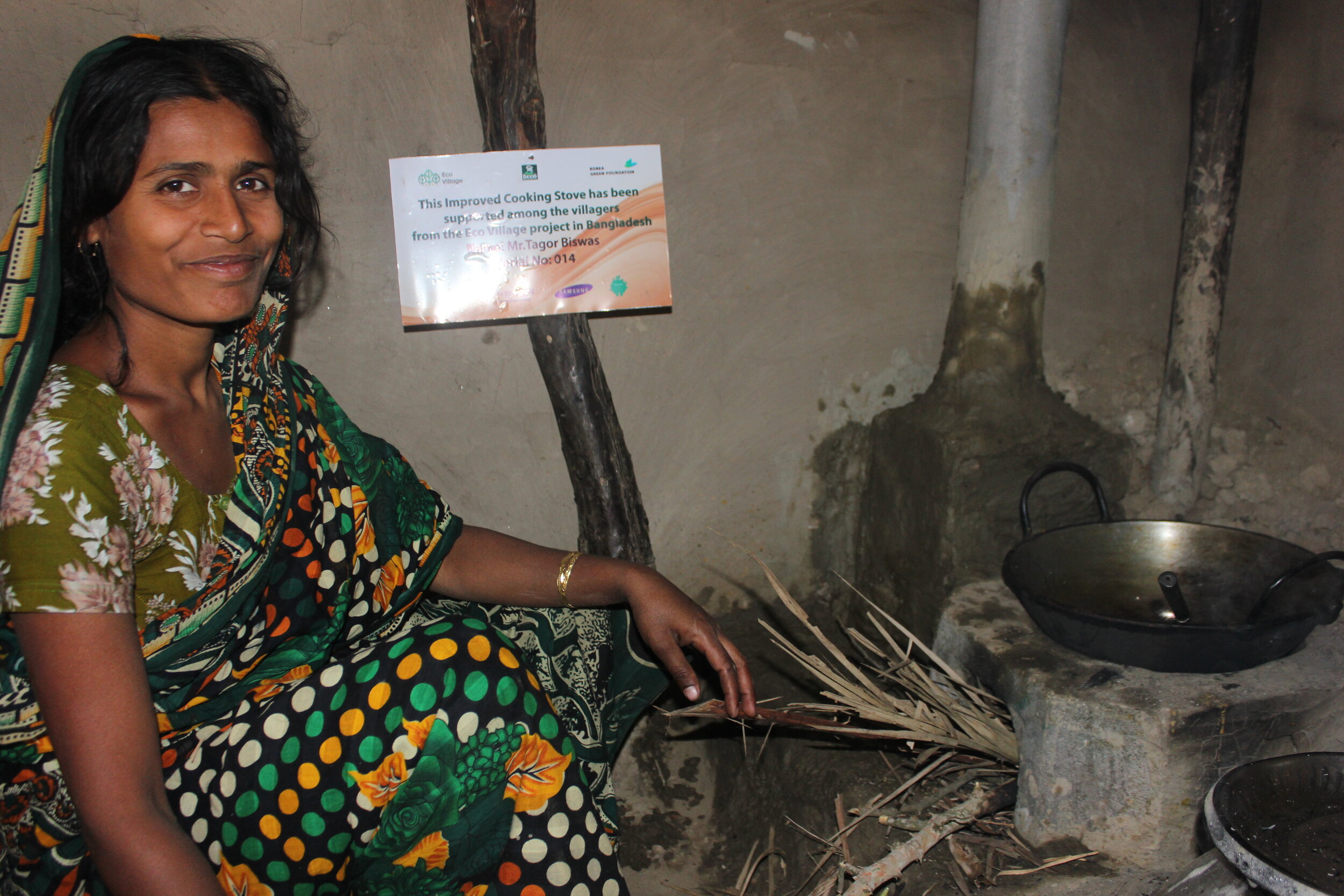Natural, social and economic regeneration in the Sundarbans of Bangladesh

The Bangladesh Environment and Development Society (BEDS) is a community-based—non-profit and non-governmental—development organisation founded in Bangladesh in 2010, with a commitment to maintain ecological balance and create harmony between humans and nature. Maksudur Rahman, Chief Executive of BEDS, takes us on a unique journey to discover some of the most complex environmental, social and economic problems affecting Bangladesh and the initiatives BEDS has been working on to provide systemic solutions for the local population and natural ecosystem. This story of transformation is—ultimately—about a new development model able to bring together economic and social progress with natural regeneration in one of the most precious natural ecosystems of the world: the Sundarbans Mangrove Forest. A story of empowerment, collaboration, trust and social entrepreneurship to shape a resilient future in the face of climate change, poverty and natural degradation. A community-based approach to pave the way for a new relation between humans and nature.
Mangrove Plantation Ceremony
Team Mangrove, BEDS
The exceptional climate vulnerability of Bangladesh
Worldwide, climate change is destroying livelihoods, infrastructure and communities, forcing people from their homes, towns and even countries. In 2016 alone, extreme weather-related disasters displaced around 23.5 million people globally.
Bangladesh is exceptionally vulnerable to climate change, due to its geographical position, low elevation (i.e. two-thirds of Bangladesh is less than five metres above sea level), high population density and inadequate infrastructure. Sea level rise, devastating storms, cyclones and floods, drought, erosion and salinisation are already displacing large numbers of people. It has been estimated that by 2050, one in seven people in Bangladesh will be displaced by climate change.
In Bangladesh, 28% of the population lives on the coast and up to 18 million people may have to move because of sea level rise alone. This would also lead the country to lose approximately 11% of its land, and—with about 70% of the population subsisting on crop agriculture and fishing—these changes are threatening a community already struggling below the poverty line. There is need for transformative action.
The Sundarbans Mangrove Forest: a unique natural ecosystem at the frontline of climate change
The map of the Sundarban mangrove from India and Bangladesh (source: Prasad et al., 2017)
Coastal regions in Bangladesh are suffering increasing frequency and severity of tropical storms, which cause loss of human life, damage to houses and infrastructure, and disruption of agriculture and other livelihoods. In this context, the vast mangrove forest that protects Southern Bangladesh from the worst of the region’s cyclones is at risk of inundation from sea level rise.
The Bengali name ‘Sundarban’ means “beautiful forest”, and this Mangrove Forest got such name for a reason. The Sundarbans Mangrove Forest—a UNESCO world heritage and RAMSAR site—is the world’s largest contiguous mangrove forest and covers a 10,000 km2 area that extends across India and Bangladesh. With over 6,000 km2 in Bangladesh, the Sundarbans is a region of exceptional importance for Bangladesh.
The Sundarbans is a unique ecosystem for its endemic biodiversity. Due to its inaccessibility, the ecosystem has preserved a unique range of animal species which are of global importance. For example, it represents the last remaining habitat for the critically endangered Bengal Tiger in Bangladesh. There are 35 species of true mangroves among 334 species of plants, 400 species of wild animals, more than 290 species of fishes and 315 species of birds.
Alongside its unique value for global biodiversity, millions of people living in the periphery of the Sundarbans directly or indirectly depend on a functioning mangrove ecosystem for their livelihood and protection against extreme weather events. The mangrove forest, in fact, supports income generation and food security far beyond the direct boundaries of the forest. Mangrove forests act as extremely effective carbon sinks, being able to absorb 97.57 tons of carbon per hectare - more than three times the absorptive capacity of non-mangrove forests. More importantly for Bangladesh’s coastal communities, mangroves also provide physical protection, trapping sediment in their intricate root structure at such a high rate that they can potentially reverse the effects of sea level rise. Therefore, the Mangrove forest acts as a natural safeguard and livelihood support for the climate vulnerable coastal people of Bangladesh.
Maksudur (M): “This is a very unique ecosystem - very important for coastal communities, and also globally. The people living nearby the forest depend on the forest for their living. They see the economic importance for them, but are not aware of how crucial this ecosystem is for global ecological balance. What they care about is collecting more resources—like fishes, crabs and honey—which results in over-harvesting being a big problem in the region. Most of the environmental problems are not due to climate, they are problems that humans have created. And poverty plays a big role in there.”
The Sundarbans Coastal Region of Bangladesh, project site (rights: Aaron Minks)
Eco-villages: a systemic solution to interconnected problems
Almost 3.5 million coastal people depend on the natural resources of the Sundarbans for their living. The majority of the population in this region is poor and without a satisfactory education level. Major social and environmental problems of the region include—but are not limited to—poverty, land use change, shortage of safe drinking water, lack of electricity, housing, health & sanitation, and security, and loss of biodiversity.
In this challenging context, BEDS has been working with local people to identify and solve some of the most complex environmental and social problems of Bangladesh, and empower the local population through initiatives that combat the negative impacts of climate change, unsustainable practices—such as the increasing use of dirty energy—and gender inequity and human rights violation. With the objective of achieving the Sustainable Development Goals, BEDS has worked on action research, communication, education, participation and awareness raising (CEPA) programs and hardware activities.
M: “Our focus is on climate change adaptation and mitigation, and improving the livelihood of the coastal communities, promoting renewable energy and environmental education. The mangroves is the most productive ecosystem in the world, so we should conserve it. There are a lot of cross-cutting issues here, therefore it is of crucial importance to ensure multi-stakeholder partnerships. We focus on eco-villages, because we believe in this way we can solve social and environmental problems by tackling them as integrated with each other. We divided this project in three components: green housing, green education and green business.”
Proclaiming ceremony of the Eco-Village project
Green housing
Under the green housing component, BEDS has been setting up activities with the coastal communities to solve drinking water and electricity problems, and build up resilience to climate change related events due to their geographic position.
Drinking Water
M: “For drinking water, we found out that the local people have a traditional technology, called PSF (pond-sand-and filter), through which they purify the water. We realised that this is not a bad technology, but needs to be improved. So, we have worked to embed renewable energy in the process and set up the desalination system. Now people have high-quality drinking water, and through desalination we were also able set up one drinking water ATM system”
Difference between purified water and pond water
Drinking water service among the villagers
Drinking water service among the villagers
Drinking Water Supply Centre
Electricity
M: “To solve the electricity problem, we installed three solar stations in the area, which now give light to almost 17 villages. Before people would live in darkness at night, but now they can use the light for their children’s education and other activities. This has enormous social and economic benefits. With solar power, we don’t only focus on giving light to villages, but also on how the locals can conduct business using solar energy. We set up different kinds of businesses using renewable energy, with a particular attention to the involvement of local women in the handicrafts business.”
Installed Solar Station
Solar Lamp Distribution Ceremony
Students with BEDS supported solar lamps
Students with BEDS Solar Lamps
Multimedia class has been introduced thanks to solar energy
Community-based small enterprise using solar energy
Climate Change Vulnerability
M: “To mitigate the impact of floods, we are planting mangroves to protect the riverbank as well as to improve the mangrove-base livelihood. People don’t know the role of the community in disaster-risk vulnerability. Many people—such as relief organisations and government agencies—start acting after disasters, but often don’t consider disaster preparedness. Instead, we believe that if we focus on disaster preparedness programmes, that’s a way to reduce loss and damage for the community”
Mangrove plantation and restoration by the students and villagers
Drill on Disaster Preparedness
What does this strategy imply, in practice?
M: “First of all, we try to develop the capacity of coastal communities to assess their vulnerability and what they need to do to be prepared for such extreme events. For this purpose, we constructed one training centre. In Bangladesh’s coastal area, there are many cyclone shelters, but after the cyclones they don’t get used anymore - there is no maintenance and they have no value. We recognised the potential multiple uses of this centre and considered how the local community can use it regularly. Now it has multiple purposes and it is well maintained over time, thus improving the livelihood of people”
Established Cyclone Shelter and Training Centre
Villagers in front of the Cyclone Shelter and DDR education
New Housing Design
M: “Most of the coastal people lost their houses due to disasters. The structural design of houses comes from an era where the frequency of disasters was not so high. Now the structure of houses should be changed. So we are trying to build up climate-adaptive houses, involving architects and experts on what techniques are most sustainable for building houses in this area.”
Green Business
As we saw before, the Sundarbans ecosystem and its natural resources represent a fundamental source of income for more than 3.5 million people living in the periphery of the forest. Without a systemic and informed approach, however, this has resulted in over-harvesting and depletion of natural ecosystems, from soil to plants and animals. Within such a context, the priority is to setup economic activities that can guarantee the long-term productivity, health and resilience of the ecosystem and its vital function for people’s livelihood.
M: “There are many kinds of different resources in the area, but people don’t know how to utilise them effectively - they are just collectors. They are collecting fishes, honey, and agricultural products, but—due to their limited knowledge, skills and capacity—they don’t know how to make products and sell them in the market for a good price. Our main objective here is to improve this capacity of coastal people”.
Honey: from collectors to marketers
M: “Normally, people would collect the honey and sell it for 300-350 Bangladeshi take per kilo to the middlemen - the intermediaries. These intermediaries give them the tools to collect the honey, but impose a low price at which they must sell the honey to them. They are bound to sell it to them. So, we tried to improve the capacity of collectors to make products with the honey, helping them with the purification process and to construct a warehouse where the collectors and family members can work - thus increasing women participation as well. We also set up a honey-candy machine, so that they can produce candies using the honey they collect. And, finally, we introduced the brand of MOWAL HONEY, which is very important for marketing purposes. Together with experts, we have developed marketing materials to support them sell their products on the market. We developed the market chain, and now they are selling their honey for almost 1800 taka per kilo. That’s a big profit for them”
Natural Honey Business
Honey Candy Business
Honey, but also bees - the role of the local people in ecosystem conservation
M: “Our philosophy is to create harmony between humans and nature - this is why we focus on the ecosystem. One of our key goals is conservation, and bees are a keystone species for the mangrove ecosystem. If there are no bees, there are no mangroves - the pollination system will be hampered and the ecosystem destroyed. We focus on bee conservation activities by involving the collectors and making them realise that if the bees are not protected, their economic profit will be lower the next year and reduce every year. So, balance is something we must absolutely consider.”
Public Campaign on Biodiversity Conservation
So, your philosophy of ecosystem conservation is very much centred around the balance between the economic and the ecological?
M: “The local people always consider more harvesting and minimum utilise, but we tried to reverse this system and introduce minimum harvest - maximum use. In this way, we have a win-win situation for conservationists, environmentalists and workers. The local people are getting benefits as they are also involved with conservation activities - they are key actors for conservation. We have knowledge and expertise, but we cannot consider the conservation of the ecosystem without the involvement of the local people. So, we are trying to educate them regularly through informal education and on-site training programmes, to make them gain knowledge on environment, biodiversity and climate change”
Public Awareness on Sundarbans biodiversity conservation
Restored Mangrove by the local people
Preserving the future of agriculture: the Community Seedbank
M: “We also focus on agriculture, because Bangladesh has a lot of agricultural production. One of the big issues in this sector is that we are losing our native seeds. Regularly, hybrid seeds companies push farmers to cultivate hybrid seeds. But the use of these seeds always come with hidden factors. If you use hybrid seeds, in fact, you need to use chemical fertilisers and pesticides. There are a lot of businesses here that sell those products, and farmers don’t get to know about the long-term problems this involves, because the production is very high right now. But after 15 or 20 years, we will have lost our soil - it will not produce any crop anymore.”
This is a very critical problem. What solutions have you envisioned to prevent this terrible outcome?
M: “In order to preserve our native seeds at a community level, we set up a community seedbank. In this way, the farmers are also producing with native seeds, helping to keep the balance. The chemicals that come with the utilisation of hybrid seeds are hampering our soil and water, leading to biodiversity loss and health damages. So we are trying to improve the capacity for organic farming systems with native seed production. We are showing the farmers that if they produce organic, they can get more benefits, including economic benefits. We are currently developing the value chain for organic products and we have developed one brand by setting up a social business with the community. This also allows BEDS to be sustainable from a financial viewpoint.”
Native Seed preservation and cultivation
Mangrove nursery
Work at the Mangrove Nursery
Tourism: distributing gains to the local population
M: “We need to improve local production systems, and that is about primary, secondary and tertiary business sectors. This is also a tourist area, which means that the Sundarbans welcome many foreign and national tourists every year. But this kind of eco-tourism is led by tourist companies - local people don’t have the skills and financial capacity to conduct these kinds of businesses. So, we are supporting local people to build infrastructure capacity and develop the skills to conduct eco-tourism activities. We are setting up types of accommodation where tourists can stay with the locals, and enjoy the local culture, products and the mangrove ecosystem. We see responsible tourism as key for conservation and livelihood in this integrated system.”
Eco-tourism business
Green Education
The majority of the population in the Sundarbans does not have a satisfactory education level and lacks skills and competences in order to set up economic activities and engage in conservation and regeneration activities for the local ecosystem. BEDS’ activities try to tackle both of these problems with an integrated approach.
M: “We organise many on-site training programmes, for instance in eco-fishing. One problem is that the people who might need this the most might be the hardest to reach. One of our priorities is to really target all the people who have an interest in that and need to be educated on the topic. We not only focus on informal education, but also on formal education. We have regular education programmes for children, and we provide education support to the community for the development of skills of women so that they can be involved in income-generating activities. We provide all kinds of education programmes: technical education, ecosystem conservation, environmental education and formal education.”
Handicraft making by trained woman
Produced Handicraft
Mangrove Ecosystem education among the students
Educating villagers on water and sanitation
How do you introduce new technologies that can be used by and for the local population?
M: “We always collect information from the people. They have their local technology, and our job is to improve and modernise it. We always focus on low-cost technology, otherwise it will not lead to a wide adoption. If you just introduce a high-cost technology, it will not have real benefits for the community because it will not be accessible by the locals. We now have several ideas for the introduction of new technologies, such as weather forecast. This is crucial to avoid farmers losing their crops. We need to develop an app in our mother tongue, Bengali, because most of the apps are in English and they are not good for the local people. So we are currently developing a system in Bengali so that local farmers can use it.”
Women with improved cooking stove
A model of bottom-up, participatory and systemic social innovation
All these initiatives are part of the BEDS’ model of development: a model of social innovation that aims at involving all the members of local communities in the integration of economic and ecological balance. A model focused on solving pervasive challenges with a systemic approach, taking into account the deep interconnections among social, economic and environmental problems. By embracing a systemic approach, it is easy to see how poverty leads to over-utilisation and mismanagement of natural resources, lack of capacity for ecosystem regeneration, inadequate skills and education level, which in turn lead to more degraded natural ecosystems and more poverty. This creates a vicious, self-reinforcing cycle that can only be broken through systemic initiatives. Otherwise, the resilience of the natural ecosystem and the ability of people to make a livelihood out of it will be severely endangered, both in the short- and long-run.
This model is about a wide involvement of the local population, leveraging local knowledge and traditions, while increasing people’s skills and competencies to build capacity for generating economic value at the same time as regenerating the natural ecosystems this economic value depends upon.
M: “We don’t create most of the ideas, we are getting most of the ideas from the community. We focus on bottom-up efforts. It’s really difficult if you don’t find the equilibrium between economic balance and ecosystem balance. We need a combination of both, otherwise it’s really hard to preserve the environment. Now we are working in the Sundarbans coastal region, and we’d like to explore or replicate this model for the whole coastal region of Bangladesh. After that, we would like to bring it to different parts of Bangladesh and share our learnings with people from other countries, people that are facing similar problems, so that they can solve their problems using our technology and strategy. This is a perfect match”
Future generations with Mangrove
December 2020
A story by Maksudur Rahman (BEDS) and Emanuele Di Francesco (Circular Conversations)
Want to read more about BEDS and support their work? Have a look at their website and contribute to their mission!






